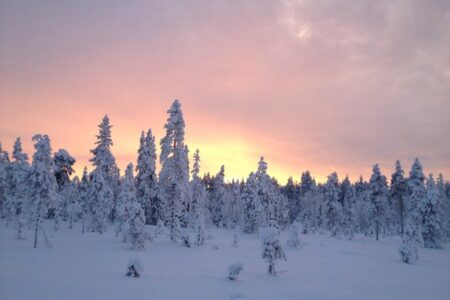On 14th August 2024, the Sun unleashed a powerful X-class solar flare, the strongest type of solar flare. This event was accompanied by a coronal mass ejection (CME), a massive burst of charged particles hurled into space. While such solar activity can disrupt satellites and power grids on Earth, for aurora hunters, it presents a thrilling opportunity to witness the Northern Lights.
Typically, after a large CME, we are alerted to strong increases in the KP Index, and can start to track this with Aurora alerts on site like MET Check: https://www.metcheck.com/WEATHER/aurora_forecasts.asp
Understanding Solar Flares and CMEs
The Sun is a dynamic star, with a constantly churning surface. Sunspots, cooler and darker regions on the Sun’s surface, are areas of intense magnetic activity. When these magnetic field lines tangle, erupt, and reconnect, they release tremendous energy in the form of electromagnetic radiation and charged particles. This burst of energy is a solar flare.
CMEs are giant clouds of superheated plasma ejected from the Sun’s corona, the outermost layer of the Sun’s atmosphere. These CMEs can travel millions of miles through space and carry billions of tons of solar material.
The Impact on Aurora Activity
When a CME reaches Earth, it interacts with our planet’s magnetosphere, the magnetic shield that protects us from the constant stream of charged particles emitted by the Sun. The impact of a CME on the magnetosphere can trigger geomagnetic storms, which in turn, can energise particles trapped in the magnetosphere. These energised particles then spiral down the Earth’s magnetic field lines towards the poles, where they collide with atoms and molecules in the upper atmosphere, causing them to glow and create the breathtaking Northern Lights.
Northern Lights activity
The recent X-class solar flare and the associated CME have the potential to significantly enhance auroral activity. Aurora hunters should be prepared for the possibility of strong auroras in the coming days. Here are some tips for maximising your aurora-chasing experience:
- Track the Aurora Forecast: Several websites and apps provide real-time aurora forecasts based on solar activity and geomagnetic conditions. By monitoring these forecasts, you can increase your chances of witnessing an aurora display.
- Escape Light Pollution: For the best views of the aurora, head away from city lights and find a location with a dark sky. The darker the sky, the better you will be able to see the faint auroral glow.
- Dress for the Weather: Auroras are most often visible at higher latitudes, which tend to have colder climates. Be sure to dress warmly in layers, especially if you plan to be out for extended periods.
- Adjust Your Camera Settings: Capturing the aurora on camera requires some special techniques. Use a DSLR camera with a manual mode and a tripod. Experiment with long exposure times, a low ISO, and a wide aperture to capture the faint auroral colours.
A Glimpse into the Sun’s Power
Solar flares and CMEs are a reminder of the immense power of our Sun. While they can cause occasional disruptions on Earth, they also present us with awe-inspiring natural phenomena like auroras. So, if you live in a region with high auroral activity, keep your eyes peeled towards the sky in the coming days. You might just be treated to a spectacular light show from Mother Nature!
Additional Tips for Aurora Hunters
- Join an Aurora Chasing Community: Connecting with other aurora enthusiasts can be a great way to share tips, learn about new locations, and stay up-to-date on the latest aurora forecasts. Sign up for our Newsletters!
- Invest in Aurora Photography Gear: While a good camera is essential for capturing auroras, consider investing in a wide-angle lens and a remote shutter release to take your aurora photography to the next level.
- Respect the Environment: If you are travelling to a remote location to chase auroras, be sure to practise responsible ecotourism. Leave no trace behind, respect wildlife, and minimise your impact on the environment.
By following these tips and staying informed about solar activity, aurora hunters can significantly increase their chances of witnessing a truly unforgettable night sky spectacle
Read the article here.





